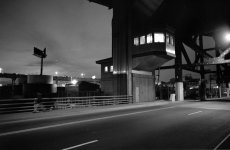C-41 film, that is. The Kodak variety, BW400CN, is quite smooth and very nearly grain free. It performs very well at ASA 200 to 400. My experience has been that it is quite nice at 320. Ilford XP2 Super has grain. It looks more like traditional B&W film. The grain is somewhere between Plus-X and Tri-X. I have used it at ASA 400 with good results. Also, the Ilford film will print correctly in an enlarger on traditional B&W paper. The Kodak film has an orange base and may drive you crazy trying to print traditionally.
All of that said, if a minilab is all you have, both are good and simple to process. However, you may have to hunt for a lab with proper quality control. All minilabs are NOT! equal.




